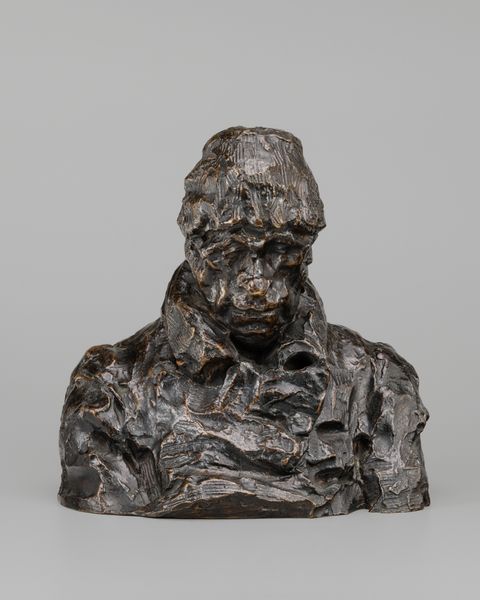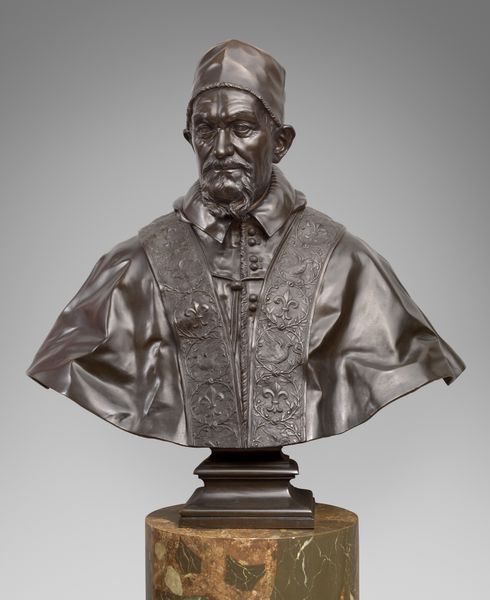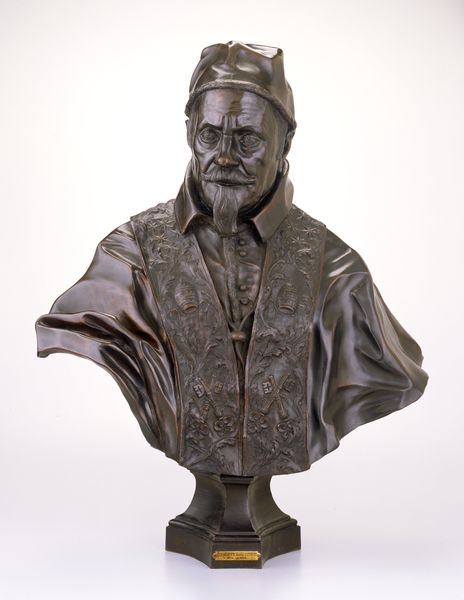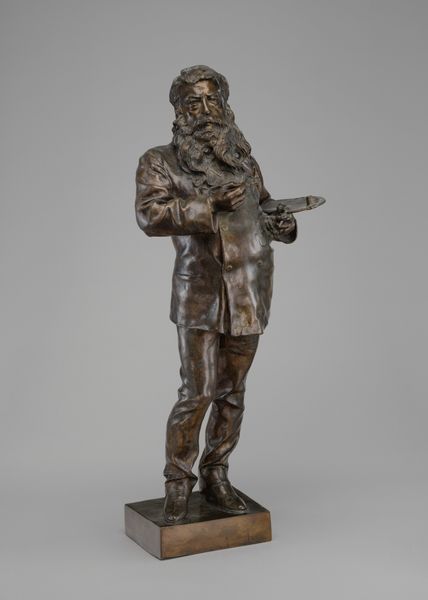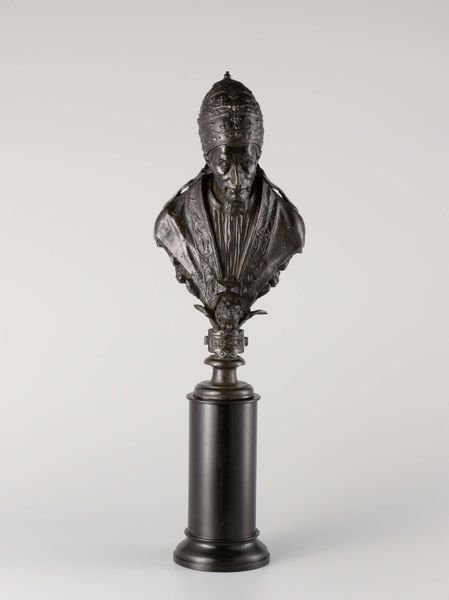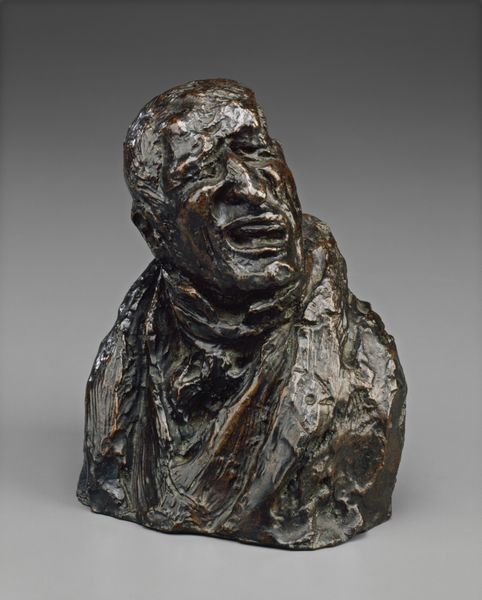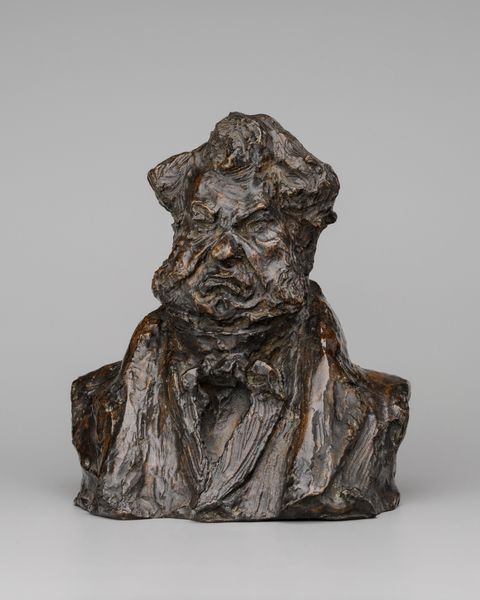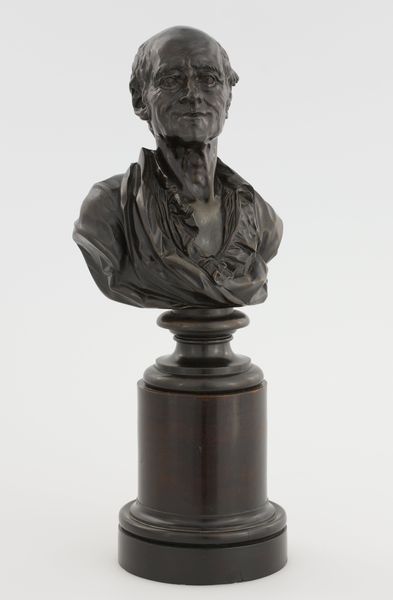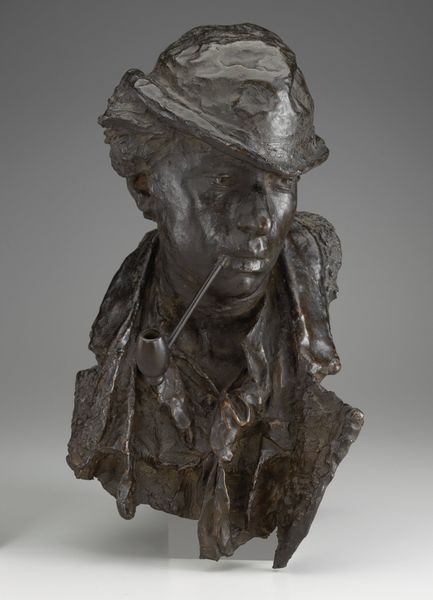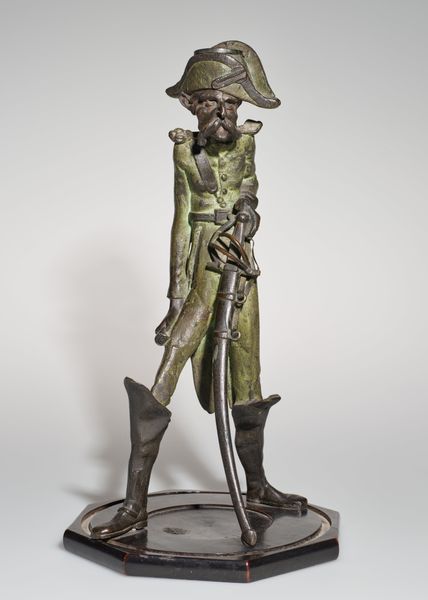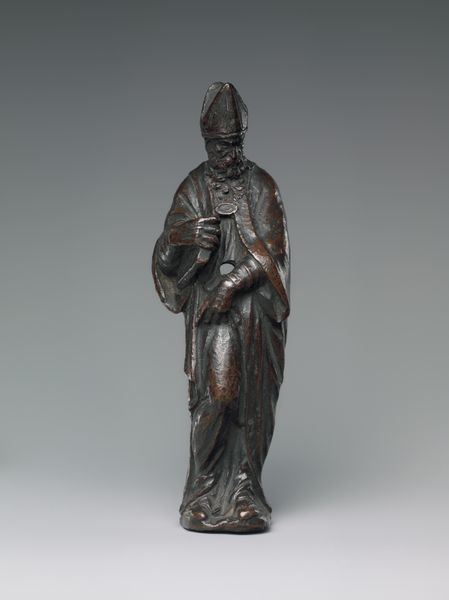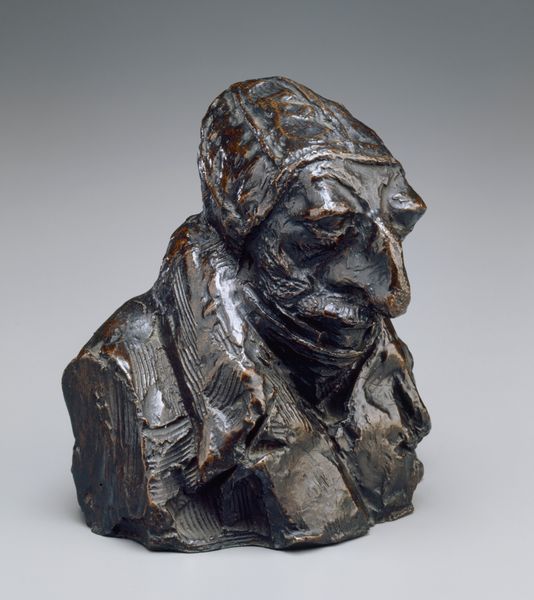
Pope Alexander VII (Fabio Chigi, 1599–1667; reigned 1655–67) 1667
0:00
0:00
bronze, sculpture
#
portrait
#
3d sculpting
#
3d model
#
futuristic
#
sculpture
#
bronze
#
3d character model
#
sculptural image
#
unrealistic statue
#
sculpture
#
men
#
3d modeling
#
decorative-art
#
3d character modeling
#
3d concept
Dimensions: Overall (confirmed): 39 1/4 x 34 1/4 x 16 1/2 in., 145 lb. (99.7 x 87 x 41.9 cm, 65.7716 kg)
Copyright: Public Domain
Editor: Here we have Melchiorre Cafà’s bronze sculpture of "Pope Alexander VII," created in 1667. I’m struck by the texture and weight of the piece, but also how lifelike it is. How should we understand a sculpture like this in its time? Curator: Well, the papacy was a huge power broker in 17th-century Europe. Bronze, with its implications of permanence and value, underscores the power associated with the Pope. Think about where this would have been displayed: likely within the Vatican or another space controlled by the Church, visually reinforcing its authority. Consider also the carefully rendered details of the clothing, with symbols woven into the fabric, further signaling Alexander VII’s position. Do you see any symbols in the vestments? Editor: Yes, I see what look like floral patterns and stars embroidered into his robes. Was this typical of papal portraiture at the time? Curator: Absolutely. But it also reflects the particular interests and aspirations of Alexander VII himself. He was a patron of the arts and sciences, and heavily involved in urban planning projects around Rome, projects aimed at elevating the city's prestige and asserting papal authority through visual grandeur. This bust can be seen as part of that agenda: presenting the Pope as a powerful, learned, and divinely sanctioned figure. Editor: So, it’s less about capturing a likeness and more about crafting a carefully constructed image. Curator: Exactly. It’s about presenting an image of authority designed to inspire reverence. To consider this, you need to ask, whom was the piece trying to reach, and what was it saying? Editor: That makes perfect sense. I had been focused on the aesthetic qualities but understanding its place in history really clarifies the artist's intentions and the Church's goals. Curator: Indeed. The sculpture isn't merely an object of beauty; it’s an instrument of power.
Comments
No comments
Be the first to comment and join the conversation on the ultimate creative platform.
